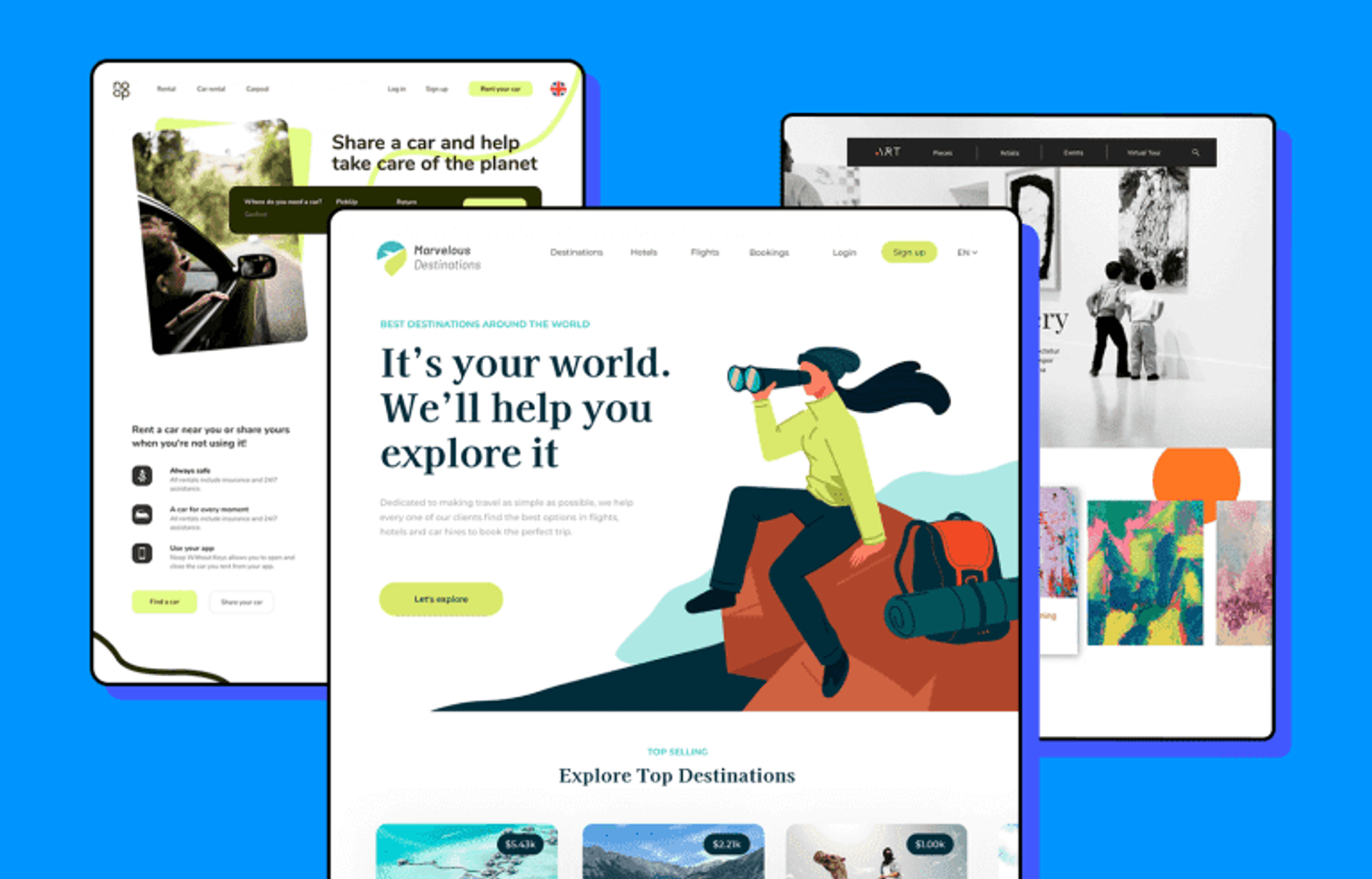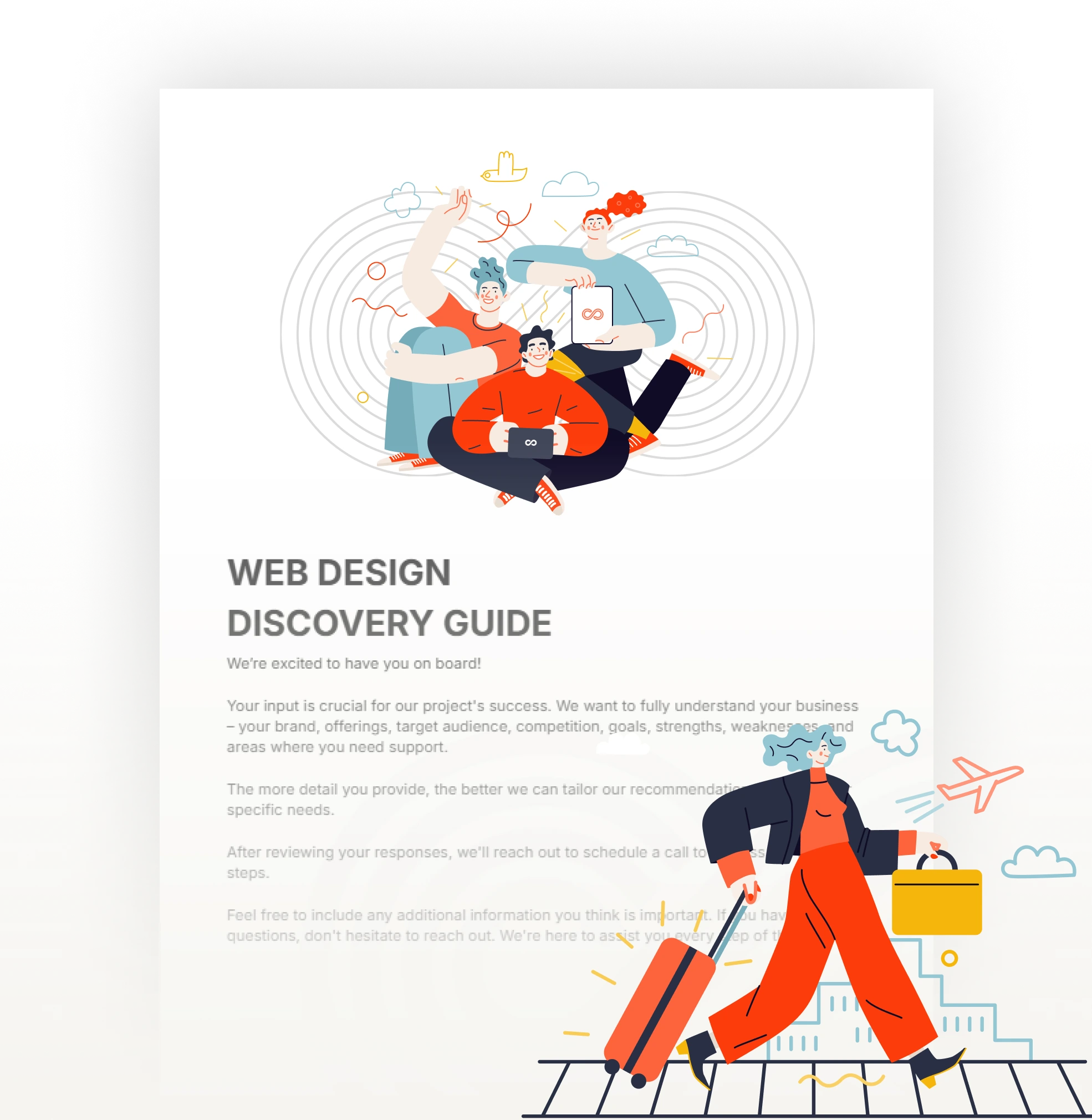Aligned Position Web Design: Creating Custom Websites That Drive Traffic and Increase Conversions
Aligned Position Web Design: Creating Custom Websites That Drive Traffic and Increase Conversions
Blog Article
The Finest Kinds Of Website Design to Boost User Experience and Engagement
In the ever-evolving landscape of electronic interaction, the performance of Web style considerably affects user experience and engagement. Different style approaches, such as minimal, receptive, and interactive formats, each deal distinct advantages that can provide to diverse individual requirements.
Minimalist Web Style
As digital landscapes end up being increasingly chaotic, minimalist website design has arised as an effective technique to improving customer experience. This design ideology focuses on simplicity, concentrating on vital elements while removing unneeded interruptions. By making use of ample white area, simple navigation, and a limited color combination, minimal design promotes clarity and guides individual focus to essential material.
The core principle of minimalist Web style is to produce a seamless communication for users. By reducing cognitive tons, customers can quickly grasp information without feeling overwhelmed. This direct strategy not only enhances use yet likewise encourages interaction, as site visitors are most likely to discover a site that is easy and aesthetically attractive to navigate.
Additionally, minimalist style usually stresses typography and imagery, making use of these components strategically to share messages properly. This concentrate on necessary elements can improve brand name identification and create a remarkable customer experience. Fundamentally, minimalist Web design is not simply a trend; it is a thoughtful methodology that acknowledges the value of user-centered layout. By removing extraneous elements, developers can develop a more interesting, efficient, and pleasurable Web experience for all customers.
Receptive Website Design
In today's varied digital environment, receptive website design has actually become vital for producing a seamless individual experience across a wide variety of devices. As users gain access to internet sites on mobile phones, tablet computers, desktop computers, and laptop computers, the capability of a website to adapt its design and material to different display dimensions and resolutions is important.
Responsive Web style utilizes versatile grids, pictures, and CSS media inquiries to make certain that Web material is provided ideally, no matter the device used. This strategy not only boosts the visual allure of a site yet likewise dramatically boosts use. Users are extra most likely to engage with a website that provides a constant experience, as it removes the stress of needing to focus or scroll exceedingly.
Additionally, internet search engine, including Google, focus on mobile-friendly websites in search rankings. By adopting responsive style, companies can boost their presence and get to a broader target market. This strategy also simplifies web site maintenance, as a solitary version of the site can deal with all tools, reducing the demand for several variations. In recap, receptive website design is a fundamental technique that boosts user experience, interaction, and total satisfaction.
Interactive Web Design
Responsive Web layout prepares for boosting individual experience, however interactive Web style takes this an action further by involving users in an extra dynamic way - Aligned Position Web Design. By incorporating aspects such as animations, clickable models, and real-time feedback, interactive website design astounds users, drawing them into a richer browsing experience
This approach not only promotes interaction however likewise urges individuals to check out content actively instead of passively eating it. Methods such as gamification, where customers gain rewards for finishing tasks, can significantly improve the time spent on a website and boost general complete satisfaction. Furthermore, interactive attributes can simplify intricate information, making it a lot more absorbable and enjoyable.

Incorporating interactive layout aspects can likewise bring about higher conversion rates, as users are more probable to involve with a site that proactively entails them. Aligned Position Web Design. Inevitably, interactive website design changes user experiences into remarkable journeys, making certain that site visitors return time after time
Flat Layout
Characterized by its minimalistic strategy, level design highlights simpleness and functionality, removing unneeded elements and concentrating on important features. This layout approach focuses on use, making certain that individuals can navigate user interfaces with simplicity and efficiency. By employing a tidy visual, level design gets rid of the mess usually found in extra elaborate designs, thereby improving customer emphasis on web content and functionality.
The trademark of flat layout hinges on its use of strong shades, simple typography, and geometric forms. These components contribute to an aesthetically attractive interface that is both contemporary and approachable. Furthermore, flat design cultivates a feeling of clearness, permitting individuals to recognize crucial activities and information without interruption.
In addition, level design is specifically effective in receptive Web style, as its simpleness converts well throughout numerous tools and screen sizes. By concentrating on necessary functions, level design not just satisfies individual requirements yet likewise motivates smooth interaction, making it a vital part of effective Web layout methods.
Adaptive Web Style
Flexible Web style personalizes the customer experience by developing multiple dealt with formats customized to various display sizes and gadgets. Unlike receptive design, which fluidly Recommended Site changes a single layout, flexible design employs unique designs for certain breakpoints, making certain ideal discussion on different systems. This strategy allows developers to focus on the one-of-a-kind characteristics of each tool, improving functionality by delivering exactly what users need based upon their context.
Among the key benefits of flexible website design is its capacity to enhance lots times and efficiency. By serving customized material and images that fit the individual's device, websites can lessen information usage and boost loading rates. This is particularly helpful for users with slower connections or limited data strategies.

In addition, adaptive design helps with an extra constant and controlled branding experience. Because developers develop several formats, they can make certain that the aesthetic elements straighten with the brand name's identification throughout different platforms - Aligned Position Web Design. This causes a cohesive customer experience, boosting interaction and advertising customer retention
Final Thought
To conclude, the assimilation of minimal, receptive, and interactive website design concepts substantially improves customer experience and interaction. Minimal design promotes clarity and emphasis, while responsive design ensures flexibility across numerous gadgets, promoting access. Interactive style astounds customers through vibrant elements, motivating exploration and personalization. Jointly, these layout approaches add to the development of straightforward environments that not only improve satisfaction yet also drive higher conversion rates, emphasizing their vital significance in contemporary website design strategies.

Minimal style cultivates clearness and focus, while responsive layout ensures adaptability throughout numerous tools, advertising availability. Collectively, these layout approaches contribute to the development of straightforward settings that not only enhance fulfillment but likewise drive higher conversion prices, underscoring their critical relevance in contemporary Web layout approaches.
Report this page